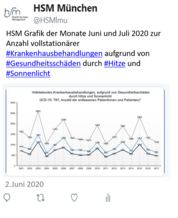Ambulatory health service utilization in patients with dementia - Is there an urban-rural difference?
| Autoren/Herausgeber: |
Koller, D. Eisele, M. Kaduszkiewicz, H. Schön, G. Steinmann, S. Wiese, B. Glaeske, G. van den Bussche, H. |
|---|---|
| Erschienen: | 2010 |
| Publikationsart: | Articles in Refereed Journals (International) |
| ISBN/ISSN: | 1476-072X |
| erschienen in: | Int. J. Health Geogr. |
| Weitere Quellenangabe: | Volume 9(1), Page 59 |
Abstract
BACKGROUND:
Due to demographic changes and an un-equal distribution of physicians, regional analyses of service utilization of elderly patients are crucial, especially for diseases with an impact like dementia. This paper focuses on dementia patients. The aim of the study is to identify differences in service utilization of incident dementia patients in urban and rural areas.
METHODS:
Basis for the analysis were all insured persons of a German Health Insurance fund (the GEK) aged 65 years and older living in rural and urban areas. We focussed on physician contacts in the outpatient sector during the first year after an incidence diagnosis of dementia. Special attention was given to contacts with primary care physicians and neurologists/psychiatrists. The dementia cohort was analyzed together with a non-dementia control group drawn according to age, gender and amount of physician contacts. Uni- and bivariate as well as multivariate analysis were performed to estimate the influences on service utilization.
RESULTS:
Results show that the provision of primary care seems to be equally given in urban and rural areas. For specialists contacts however, rural patients are less likely to consult neurologists or psychiatrists. This trend can already be seen before the incident diagnosis of dementia. All consultations rise in the quarter of the incident dementia diagnosis compared to the control group. The results were also tested in a linear and a logistic regression, showing a higher chance for persons living in urban areas to visit a specialist and an overall higher rate in service utilization for dementia patients.
CONCLUSIONS:
Because of a probable increase in the number of dementia patients, service provision has to be accessible even in rural areas. Due to this and the fact that demographic change is happening at different paces in different regions, regional variations have to be considered to ensure the future service provision.





